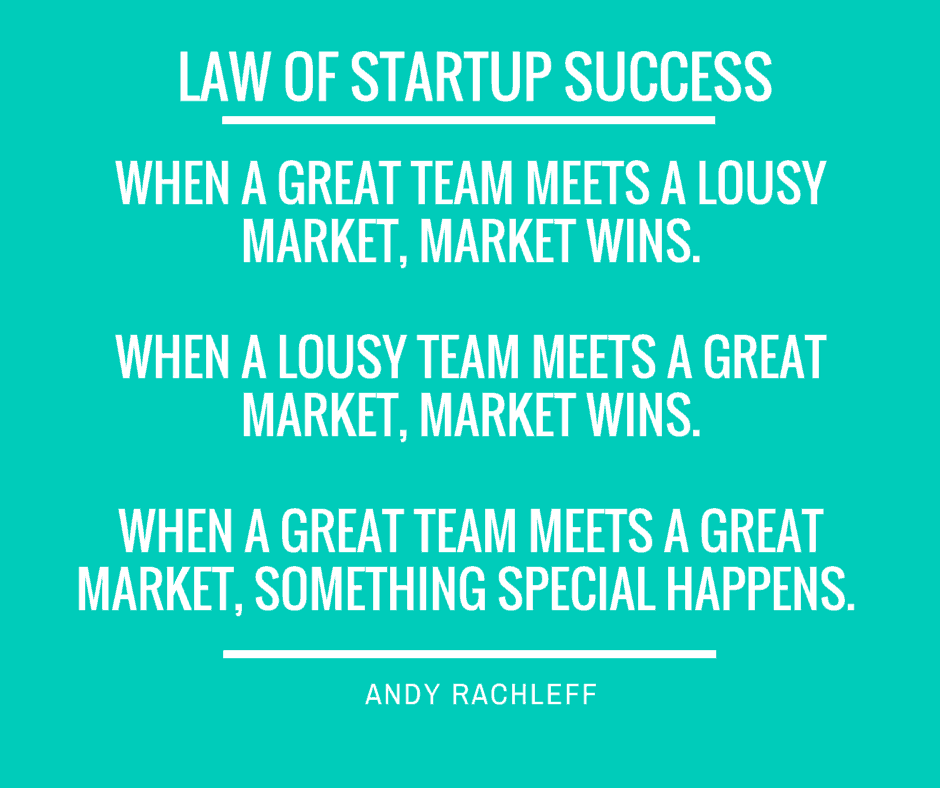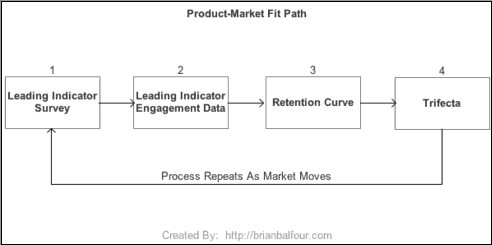- April 15, 2019
- Posted by: Dr Vinati Kamani
- Category: Healthcare Technology
The failure rate among startups is astonishingly high. 90 percent of the startups fail to make it big in the long run. If there is anything that differentiates the 10 percent of the businesses that manage to be successful from the rest of their contemporaries, it is the Product/Market fit.
A lot of startups fail because they fail to achieve the Product/Market Fit. The term has been thrown around a lot in recent years, but what is a product market fit?
Now, if you’re just researching about Product Market Fit but haven’t built your web or mobile app yet, consider hiring a software development company to help you build it.
The first step after you’ve built your tech startup is to find market demand for it. This involves assessing whether your solution satisfies the problems of your audience and also whether the problem is worth solving. This is product-market fit.
Understanding the concept of Product/Market fit
There are three pillars that determine the success of the startup in any industry- the team, the product and the market in which the selling takes place. Out of these, the most important is undoubtedly the market.
Your team doesn’t determine the acceptance level of your product in the market. Your product need not have all the high-end features.
You may start out with a minimum viable product with just the basic features and people would still buy it if there’s a market demand for it. But without a target market that is filled with customers willing to buy your product, the startup would inevitably fail.
Marc Andreessen is known to have originally coined the term ‘Product/Market Fit’ where he outlines the fundamentals behind it in his post ‘The Only Thing That Matters’:

Marc writes how a lot of startups fail because they never get to Product/Market Fit. According to Marc, “In a great market – a market with lots of real potential customers – the market pulls product out of the startup. The market needs to be fulfilled and the market will be fulfilled, by the first viable product that comes along.
The product doesn’t need to be great; it just has to basically work. And, the market doesn’t care how good the team is, as long as the team can produce that viable product. In short, customers are knocking down your door to get the product; the main goal is to actually answer the phone and respond to all the emails from people who want to buy.”
Marc articulates this further by citing Andy Rachleff as the following law to startup success:

Why should you look for a Product/Market Fit?
Steve Blank, Silicon Valley serial-entrepreneur and academician, explains why startups should look for product/market fit through an animated explainer video.
He highlights that the customer development process is an iterative circle and entrepreneurs have to go through the four phases (draw the business model canvas, test the problem, hire a software developer to build the app and test the solution, verify the pivot) over and over again until they achieve the product/market fit. Only then, can you effectively move to the next steps.
Take a look:
How to find the Product/Market Fit?
“You often stumble into your product/market fit. Serendipity plays a role in finding product/market fit but the process to get to serendipity is incredibly consistent. What we do is teach that incredibly consistent process.” Andy Rachleff
The journey of an idea to product/market fit is not predefined. While there isn’t a common blueprint for finding the Product/Market Fit, (if there were, the number of successful startups would have been considerably higher) there are definite steps that you can take on your startup journey which would bring you one step closer to the much sought-after Product/Market Fit.
Step 1. Start with finding a problem to solve
Every successful startup solves a problem for its users at the core. Analyzing the market for a trends analysis to figure out the pain points and devising ways to provide solutions to the problems should be at the core of your business. Identification of customer problems corresponds to a good market opportunity.
Step 2. Identify the target audience
Market segmentation deals with creating different buyer personas on the basis of customer needs and behavior. Identifying and selecting the target audience that you are developing your product for helps give clarity about the target customers you are aiming to sell the product to.
Step 3. Map out the value proposition
The value proposition is a strategic roadmap that gives an insight into what the product offers to the customers. It acts as a differentiator from the competition and touches upon the whats and hows of product offering being different than your competitors.
Step 4. Create wireframes and product prototype
Wireframes and prototypes remove ambiguities and provide the team as well as the investors a more clear vision of the product that is to be developed.
The prototype can be as simple as a drawing of the features on whiteboard or paper. Conversely, you could make use of prototyping tools to get a detailed, high-level, functional product prototype.
Step 5. Start with the minimum viable product
The minimum viable product is the first iteration of your product offering. It contains all the must-have features that are core to solving the target audience’s problem.
The nice-to-have features are added in the subsequent updates. Building an MVP provides the validation that you are headed in the right direction on your product journey and can be used to test the customer interest.
Step 6. Test the customer reaction
Feedback from the target audience is critical to gauge whether you are truly on the path of achieving the product market fit. User surveys are the best ways to test customer reaction.
The 40 percent rule states that if more than 40 percent of your customers choose ‘very disappointed’ when asked how would they feel if they could no longer use the product, you are on the right path on achieving the product market fit.
Apart from close-ended questions, open-ended feedback from initial users can help provide valuable insights into the customer requirements as well.
Step 7. Be ready to pivot
If the minimum viable product tests out, additional features can be incorporated into your product and you are good to go. In reality, things seldom pan out so smoothly.
The ability to pivot is vital to startup success. Do an introspection into the problem, people and processes in relation to your target audience and be open to making a change.
How can you tell whether you’ve got Product/Market Fit?
Contrary to the assumptions, finding the Product/Market Fit is not an extravagant event that gets noticed. There is no “Eureka moment” and definitely no fireworks if/when you do achieve a Product/Market fit.
It is not a destination to be reached because finding the Product market fit is a journey in itself.
Brian Balfour, VP Growth at HubSpot, has the opinion that it is important for all companies to understand at what stage they are in of the Product/Market Fit journey.
It will help them focus on the right goals, metrics, channels, and team structure. In one of his blog post, he writes, “My guess is most of you are screaming ‘when you reach Product/Market Fit!’ True, but knowing you have reached product/market fit typically isn’t a clean cut answer. It is a line that is always moving.”
He elaborates, “Instead of thinking about Product/Market Fit as a definitive point on the startup path, I think about it as a series of tests and check points that increase in difficulty, but also in definitiveness. Knowing where you are along this path also helps you understand when to go from traction, to transition, to growth.”
Here are the Product/Market Fit check points by Brian:

That being said, there are some definite indicators when you have reached the Product/Market fit and when you haven’t. Marc Andreessen gives us a more vivid illustration of what Product/Market Fit really feels like:
You can always feel when Product/Market Fit isn’t happening. The customers aren’t quite getting value out of the product, word of mouth isn’t spreading, usage isn’t growing that fast, press reviews are kind of “blah”, the sales cycle takes too long, and lots of deals never close.
And you can always feel Product/Market Fit when it’s happening. The customers are buying the product just as fast as you can make it — or usage is growing just as fast as you can add more servers. Money from customers is piling up in your company checking account. You’re hiring sales and customer support staff as fast as you can. Reporters are calling because they’ve heard about your hot new thing and they want to talk to you about it.
Joshua Porter, the creator of the What to Wear daily report and publisher of Bokardo, suggests in his post ‘Principles of Product Design’, the level of dedication and excitement by customers as an indicator of Product/Market Fit.

Alex Shultz, in his talk at Stanford on How to Start a Startup, defines Product/Market Fit as that which is based on churn and user retention.
“Look at the curve, ‘percent monthly active’ versus ‘number of days from acquisition’. If you end up with a retention curve that is asymptotic to a line parallel to the X-axis, you have a viable business and you have Product/Market Fit for some subset of market.”
Check out his full talk to understand the whole picture:
Ben Horowitz, co-founder of venture capital firm Andreessen Horowitz wrote a blog post, ‘The Revenge of the Fat Guy’, in which Ben clearly busts the common myths about Product/Market Fit.
Myth #1: Product-market fit is always a discrete, big bang event
Myth #2: It’s patently obvious when you have product-market fit
Myth #3: Once you achieve product-market fit, you can’t lose it
Myth #4: Once you have product-market fit, you don’t have to sweat the competition
How do you measure Product/Market Fit?
Sean Ellis, CEO and Founder of Qualaroo and GrowthHackers community, is of the opinion that startups should measure their Product/Market Fit as soon as possible as it significantly impacts how one’s startup performs.
Andrew Chen in one of his blog post, suggests the importance of getting to Product/Market Fit quickly rather than later.
“Basically you want to get to the point where your product is working. If you can’t get there within the first 1-2 years of your company’s existence, you generally run out of money or your team falls apart.”
So, here are some Product/Market Fit tools which can help you measure your performance and get you closer to your goals:
For Customer Retention
According to the Harvard Business School, increasing customer retention rates by 5% increases profits by 25% to 95%. Once your product is ready, you need to figure out the strategies and tactics to attract and retain customers.
There is no one tool for retaining your customers. Different tactics need different tools. For example, one way of improving customer service and satisfaction is by providing support systems within your site.
You can use help desk softwares such as Zendesk or Freshdesk or live chat software like Olark or Zopim for this purpose.
Then you can use Intercom, which is a customer communication tool. It allows you to segment your users into smaller groups and message them via email, in-app notifications, and live chat.
For Getting Feedback
The best way to measure Product/Market Fit is with surveys.
According to a blog post by Baremetrics,

Survey (dot) io is a free survey tool that helps you implement some of Sean Ellis’ techniques. The tool lets you create your own initial customer development survey.
In an interview to VentureHacks, Sean highlights how to judge the results of the survey and what should one do if you don’t get convincing results, “One of the things that I’ve seen work well for companies that are in the 20% range, or even lower, of the user saying they’d be very disappointed without it, is to focus on, one, why those people would be very disappointed without it, and to really start to say, OK, this is our best signal of value that we’re creating.
And then, to look at the feedback from the people who would only be somewhat disappointed without it. Ignore the people who say they would not be disappointed without it, because they’re so far from being satisfied.”
For Analysis
In order to get Product/Market Fit, you should assess the product accuracy and repeat usage of your product.
Google Analytics and KISSmetrics are two tools that will let you track metrics that are important for understanding how customers use your product.
The KISSmetrics blog states the difference between these two tools:
“If Google Analytics is the tool that will show you what happened, KISSmetrics is the tool that will show you who did it. Where Google Analytics is focused on the ‘what’, KISSmetrics is focused on the ‘who’.”
Equipped with data about your product and customers, you either move forward towards growth or you need to repeat the customer development cycle as highlighted by Steve Blank earlier in this article.
Finding the product/market fit is the secret to startup success. Developing a stellar product for a great market that demands your product because it provides true value is what you should be aiming for in your startup journey.
Image credit: premium.wpmudev, Startup Marketing by Sean Ellis
